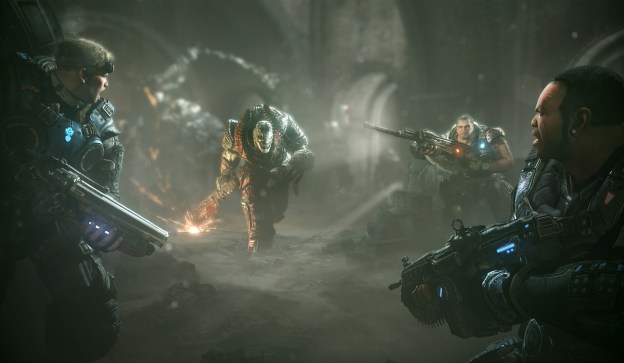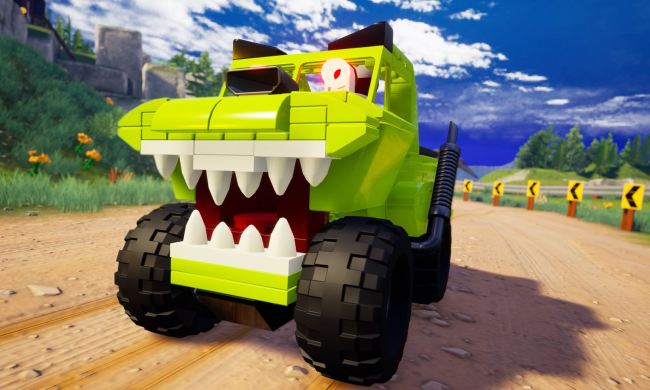 Gears of War fans are going to be taken aback when they play Gears of War: Judgment, but in a good way. So much about the game feels familiar. It’s better, sure, with smoother controls and a more varied assortment of firearms creating new tactical play opportunities. It’s still Gears though; the focus on (and importance of) cover, the roadie runs, the detestable Ticker armies… it’s all here.
Gears of War fans are going to be taken aback when they play Gears of War: Judgment, but in a good way. So much about the game feels familiar. It’s better, sure, with smoother controls and a more varied assortment of firearms creating new tactical play opportunities. It’s still Gears though; the focus on (and importance of) cover, the roadie runs, the detestable Ticker armies… it’s all here.

The reworked S3 spawn system also represents a huge change. Previous Gears of War games were filled out by completely scripted encounters. There was always an element of chance in the type and makeup of enemy forces in Horde/Beast, but the campaign always served up the same enemies in the same locations. That is a thing of the past in Judgment. Whenever you spawn, enemy types and positions are shuffled. You might face and be immediately overwhelmed by a half-dozen Bloodmounts, only to return on a respawn and find a mixed army of Wretches and Tickers. The concept at least has the right idea, though we’ll have to wait and see how S3 plays out in the finished product before making a judgment (pun only sort of intended).
Epic Games’ latest hands-on chunk of Judgment sends players off to Sera’s Halvo Bay, circa Emergence Day. Imagine an even wealthier, sunnier take on San Diego with lots of ornate stonework and wide, cobblestone streets and you’ll have a sense of what Halvo Bay looks like. This chapter focuses on the testimony of Garron Paduk. For those who need a refresher: Judgment‘s story unfolds primarily as a flashback, via the testimonies of Lieutenant Damon Baird and his squad after they’re placed on trial for treason.


Epic also offered a look at a previously unannounced Survival mode. This new mode combines the class-based play of OverRun with the wave-based mentality of Horde mode with – oddly – Battlefield‘s popular Rush game type. Up to five players are dropped onto a map with three points to defend over time; when one point falls, respawns move to the next area. The idea is to survive through 12 increasingly challenging waves of Locust assaults, with emphasis placed on using the different classes in concert with one another.
The engineer, for example, is the only one capable of repairing damaged defensive emplacements. The sniper, on the other hand, can reach overwatch positions that the others can’t. These are all standard-practice shooter roles that should be immediately familiar, but you’ll need them all working together in order to survive. In fact, having a full and varied team is so vital to Survival that the game will automatically fill in open roster positions with bots, smartly selecting classes that aren’t otherwise accounted for by human players.

Really, depth is the big takeaway after our final sitdown with Gears of War: Judgment. The play is fundamentally the same, but it feels like there’s a lot more here now than there ever was before for players to invest in. From the replay-friendly campaign to new modes like OverRun and Survival to a varied assortment of progression-based unlockables, the hooks are multitudinous. Don’t expect to see much more in the weeks ahead, but that shouldn’t be a big deal; Gears of War: Judgment is in stores on March 19, 2013.


